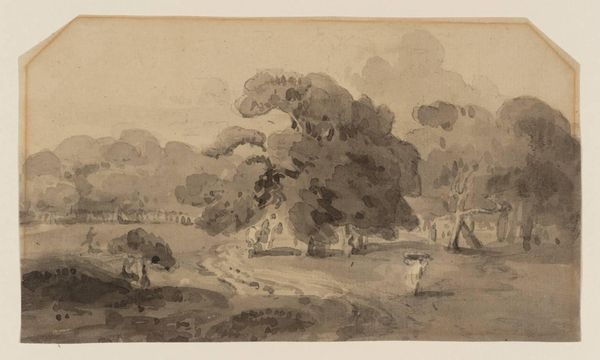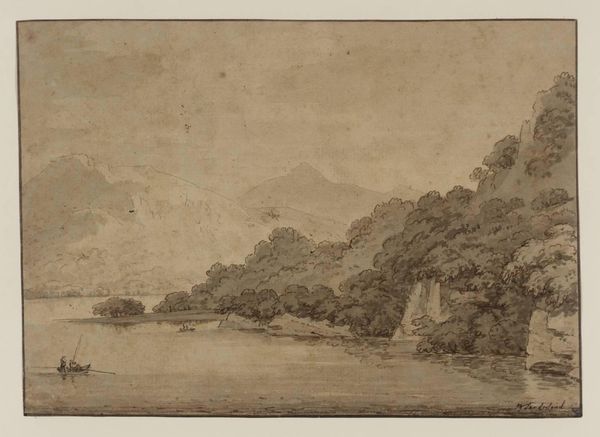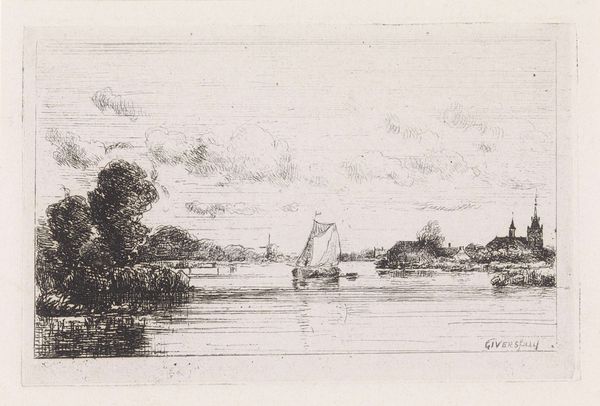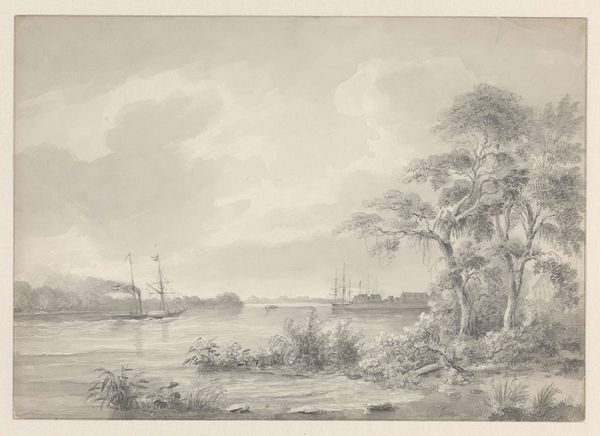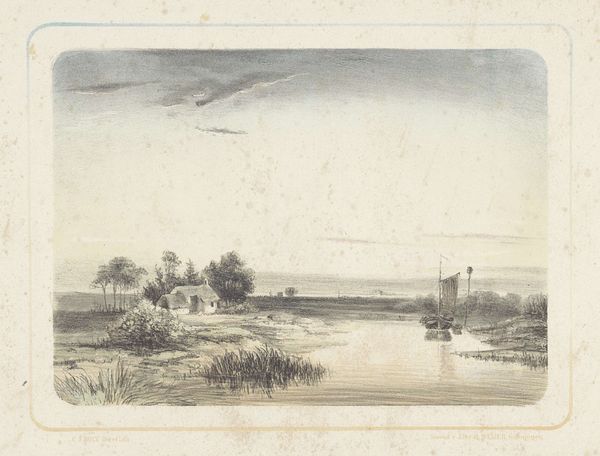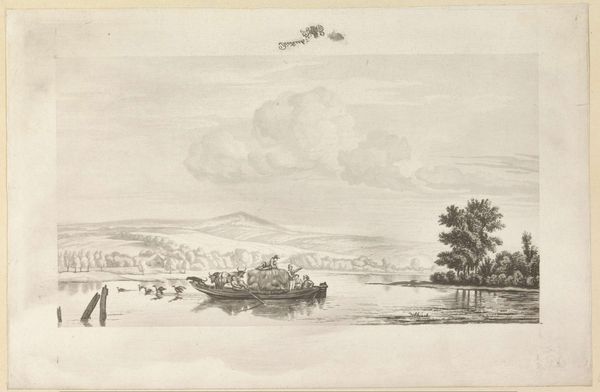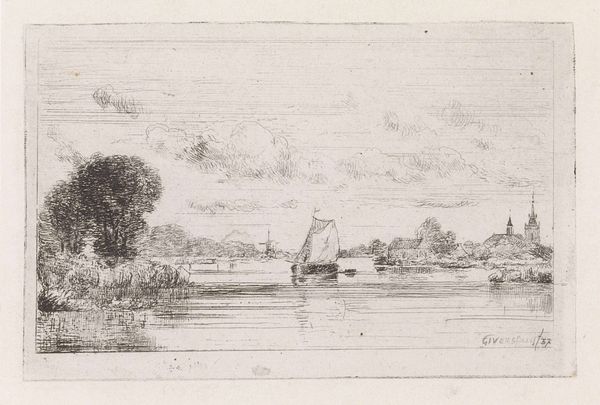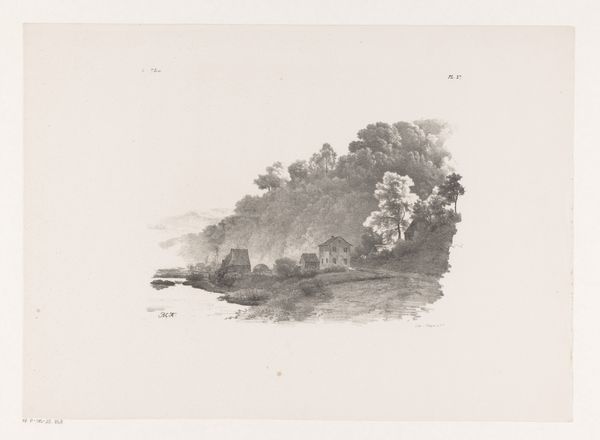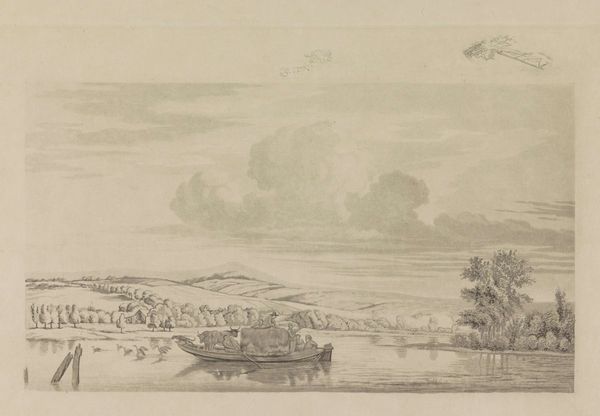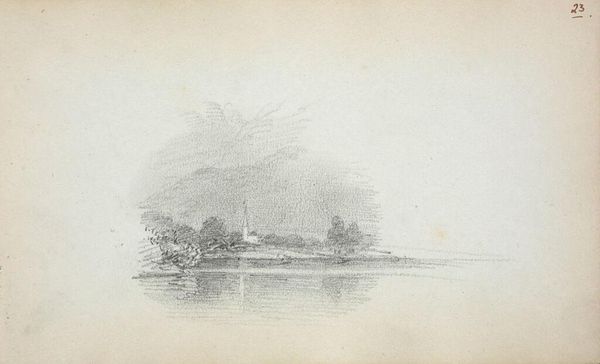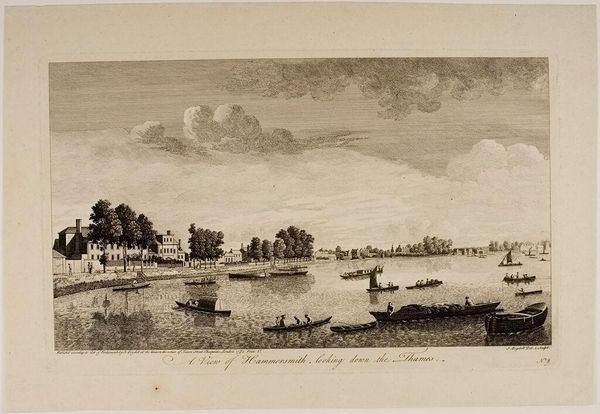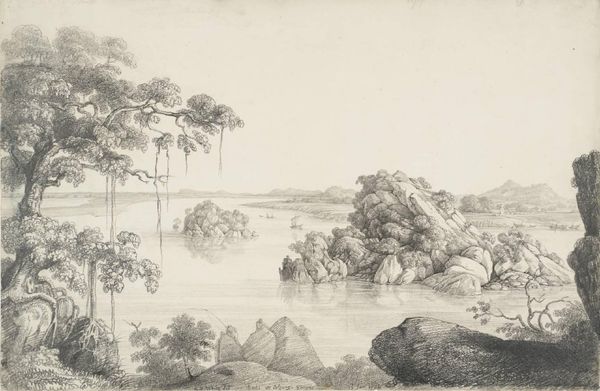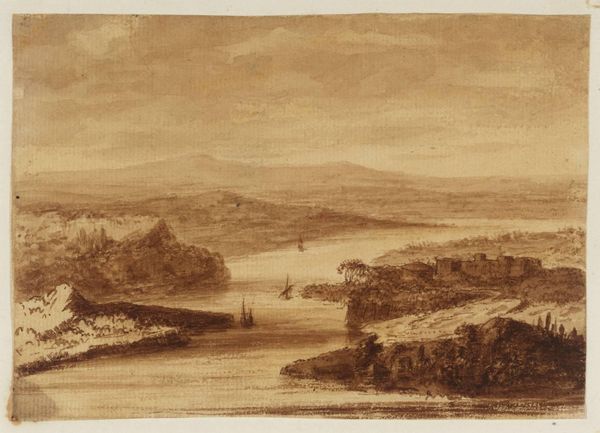
Gezicht op een aantal huizen aan een rivier, mogelijk de Jodensavanne before 1859
0:00
0:00
drawing, graphite
#
drawing
#
landscape
#
line
#
graphite
#
graphite
#
realism
Dimensions: height 22 cm, width 32 cm
Copyright: Rijks Museum: Open Domain
Curator: Hendrik Huygens’ drawing, likely representing a scene at Jodensavanne and dated before 1859, is quite striking. My immediate feeling is a deep, contemplative stillness—the monochromatic graphite lends a hushed quality. Editor: It’s the labor I see. Look at the graphite lines; so economical, used to evoke the river’s slow current and the thatched roofs. The drawing material itself is so unassuming. Yet it bears witness to the structures erected. Who extracted this material? For whom? Curator: Indeed! There's a definite quiet grandeur achieved through very simple means, just graphite on paper. For me it invites questions more than answering them, the haziness around those buildings makes you feel almost in a dream. Editor: Right! These drawings, they give an ordered overview; the artist has carefully organized the elements. Yet, the graphite feels less imposing, it gives us this subtle impression. And what we often forget is how physically demanding making something like this can be. It would take so many hands to clear, fell and shape the graphite from it's source for drawing to occur. Curator: Thinking about those houses nestled on the hill - there’s a subtle story there, isn't there? They feel both permanent and ephemeral. You see a small boat in the water with numerous indistinct passengers. Do we think they are visitors? Editor: We can see the value judgments made visible through Huygens’ work. It’s about land, extraction and ownership, all visualized via fairly common materials in an economic but thoughtful way. The perspective is like viewing a model—the houses feel displayed rather than inhabited. Curator: Perhaps we could view these not just as depictions but as ghostly glimpses into history - a reflection on transience. It encourages a real quiet reflection about the way we record and the legacy. Editor: I’m with you there; Huygens encourages us to consider art-making in social terms through materiality itself: these aren't necessarily luxury goods at the outset but material of transformation and industry. The subtle choice of drawing offers a way to look at the social processes that birthed them.
Comments
No comments
Be the first to comment and join the conversation on the ultimate creative platform.
